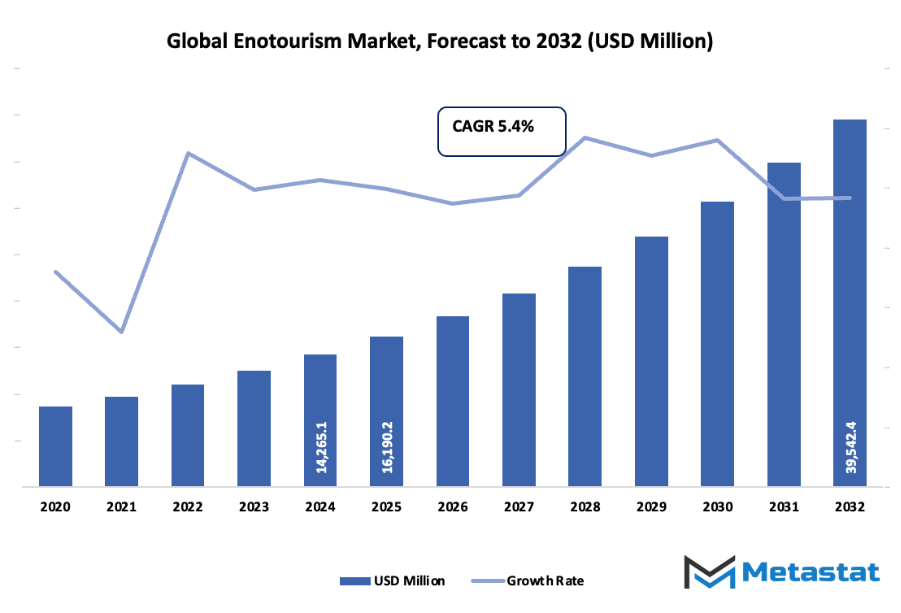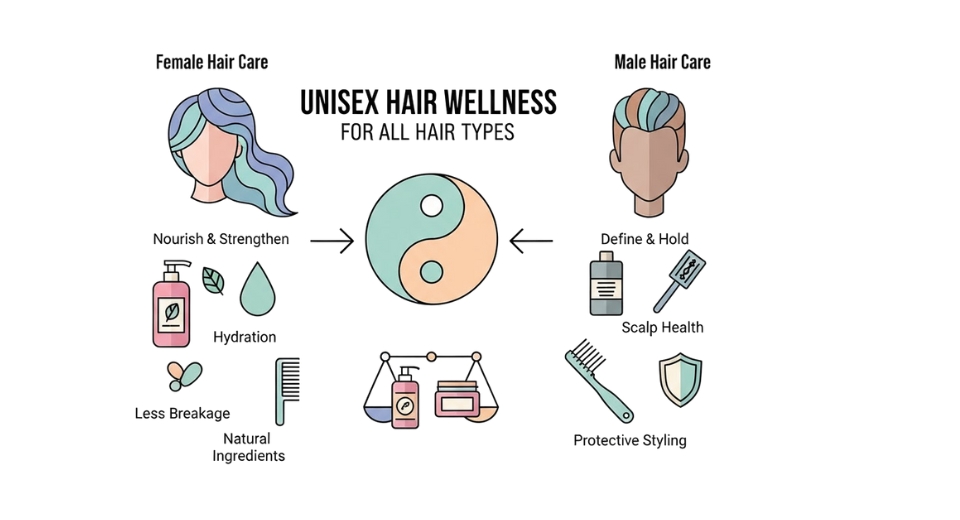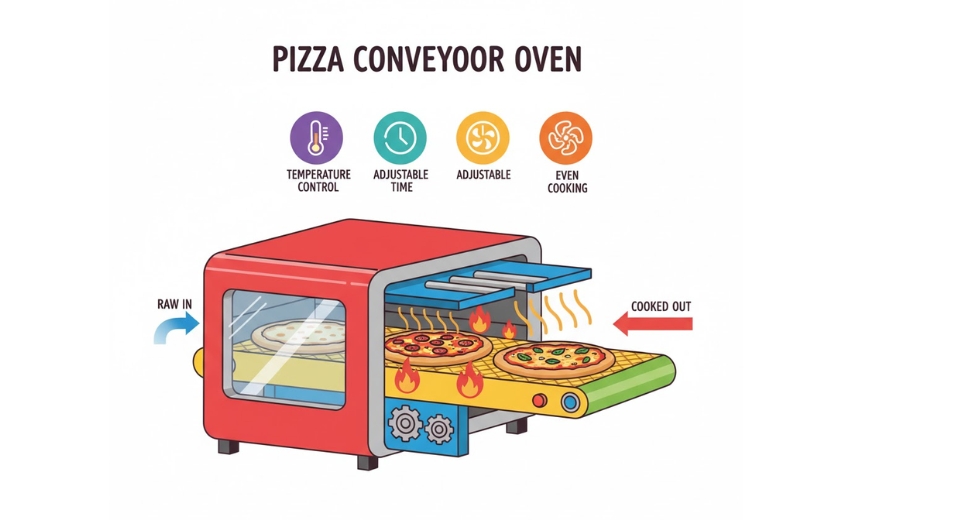Global Enotourism Market - Comprehensive Data-Driven Market Analysis & Strategic Outlook
The global enotourism market and the whole industry have gradually developed from a simple form of travel that was locally rooted into a highly appreciated and economically substantial force that was mainly dictated by the changes in consumers' preferences and the new ways of attracting tourists to the regions where wine is produced. In the beginning, only a few little European vineyards were welcoming the inquisitive travelers, and that behavior had not yet been officially named. The development of the railway system in the early 1900s allowed people to easily travel to the countryside where the vineyards were, and after World War II, countries like France, Italy, and Spain began to entice tourists to vineyards by offering them through their national heritage programs. These innovative trials can be seen as the first steps in turning what later on became a well-organized part of international tourism.
- The global enotourism market size is around USD 16190.2 million in 2025, and it is expected to grow at a CAGR of approximately 13.6% through 2032, with the possibility of exceeding USD 39542.4 million.
- Private Guided Tours hold almost 47.6% of the total market, which leads to the continuous need for innovation and application development through intensive research.
- Top factors that are contributing to the growth: Growing global interest in culinary and experiential travel, Increasing promotions of regional wine cultures, and heritage tourism.
- Opportunities: Rise in digital booking platforms and virtual wine tasting experiences.
- The major market insight is that the market is going to increase its value tremendously over the next ten years, thus giving rise to huge growth opportunities.

The 1980s witnessed the organized wine routes in regions such as Burgundy and Napa Valley as a watershed moment, which pushed wineries to offer not only tastings but to take the public to their world of wine. The International Organisation of Vine and Wine data indicated that approximately 20 million visitors per year were attracted to the top wine spots by the early 2000s, thus confirming a shift in the global enotourism market to boundaries far beyond local ones. Later on, government tourism departments in the U.S., Australia, and Argentina released reports that they had an increasing number of visitors participating in vineyard tours, culinary events, and harvest festivals, which gradually reshaped the landscape of the wine world, where quality, storytelling, and authenticity were the main factors.
The consumer's behavior will keep changing in the direction of more profound sensory experience, and thus, the vineyards will use the digital booking tools, GPS-guided walking paths, and interactive tasting rooms to attract more people. In addition, touchless payment systems and online reservation platforms which have gained wide acceptance as a result of the pandemic will in no way be omitted from future operations. Furthermore, some agriculture ministries have been encouraging the producers to obtain sustainability certification, which has led the wineries to focus their visitor programs around eco-friendly farming and the transparency of production narratives.
The global enotourism market is now at a point where cultural heritage, hospitality, and technology all come together. National tourism offices' statistics indicate that there are international vineyard visits which are increasing on a steady basis year after year and in fact, the number of visitors in some destinations is already above that of pre-2019 level. If the current trends continue, the future attractions would be the result of an artfully blended combination of the traditional winemaking culture with the data-driven visitor management, multilingual experiences, and climate-smart vineyard walking tours.
Market Segments
The global enotourism market is mainly classified based on Tour Type, Activity Type, Tourist Type, Booking Mode.
By Tour Type is further segmented into:
- Private Guided Tours: Around the global enotourism market, private guided tours offer focused attention from a trained guide who tailors each visit to vineyard settings, regional history, and tasting experiences. Personal direction during every stage of the tour supports a relaxed pace, deeper understanding, and steady engagement through curated routes and well-planned schedules that enhance overall value.
- Self-guided Tours: Self-guided tours give each visitor complete control over timing, route selection, and tasting choices. Independent exploration encourages flexible movement through vineyards, cellar doors, and surrounding attractions. Map-based pathways, posted information, and clear signages allow steady progress without structured guidance, creating a calm atmosphere suited for travelers seeking privacy and slower movement.
- Group Tours: Group tours gather multiple participants for shared transportation, coordinated stops, and guided explanations. Collective movement creates social interaction, cost savings, and structured scheduling. Pre-arranged routes support smooth flow from one tasting venue to another, while group-based learning fosters friendly conversation, shared appreciation of regional wine culture, and dependable organization throughout the journey.
By Activity Type the market is divided into:
- Wine Tastings and Tours: Wine tastings and tours provide a step-by-step introduction to vineyard practices, grape varieties, fermentation methods, and cellar aging. Each activity highlights regional flavours through guided sampling sessions. Scheduled visits to production areas, scenic spaces, and tasting rooms support growing interest in craftsmanship, local traditions, and sensory understanding developed during every stage of exploration.
- Wine Festivals and Events: Wine festivals and events present seasonal gatherings that unite vineyards, culinary partners, and local artisans. Large celebrations bring together tasting booths, educational workshops, cooking demonstrations, and cultural performances. Each occasion strengthens community participation, encourages economic activity, and highlights regional specialties through lively surroundings that attract large audiences seeking vibrant wine-centered experiences.
- Others: Other activities within this market segment include outdoor vineyard walks, grape-harvest participation, blending workshops, and educational classes. Each option supports deeper appreciation of agricultural processes, craftsmanship, and creative expression. Varied formats allow travelers to match interests with suitable activities, expanding overall engagement beyond basic tasting experiences and offering wider learning opportunities across diverse settings.
By Tourist Type the market is further divided into:
- Domestic: Domestic tourist activity focuses on visitors traveling within a home country to explore nearby wine regions. Shorter travel distances, familiar cultural settings, and local knowledge support frequent participation. Domestic engagement strengthens regional economies, encourages repeat visits, and nurtures long-term interest in vineyard developments, seasonal events, and traditional tasting experiences available across multiple destinations.
- International: International tourist activity centers on travelers crossing national borders to experience distinctive wine traditions abroad. Unique regional styles, cultural differences, and scenic landscapes attract visitors seeking memorable journeys. Extended itineraries, multi-region circuits, and curated tasting programs help build broader understanding of global wine culture while supporting economic growth within host destinations.
By Booking Mode the global enotourism market is divided as:
- Direct Booking: Direct booking channels allow visitors to arrange winery visits, tasting sessions, and accommodation through official sites, emails, or phone contacts. Direct communication ensures accurate information, transparent pricing, and timely confirmation. Wineries maintain stronger control over scheduling and customer engagement, creating smoother coordination for planned activities and personalized service.
- Travel Agencies: Travel agencies prepare structured itineraries, coordinate transportation, and secure reservations across multiple wineries. Professional planning reduces time spent on research and supports hassle-free movement through tasting venues. Agencies provide trusted guidance, packaged experiences, and reliable organization, making wine-focused travel easier for individuals seeking complete arrangements.
- Online Marketplaces: Online marketplaces offer digital platforms where travelers compare options, read reviews, and secure bookings for vineyard visits and tasting events. Centralized listings provide clear details on timing, pricing, and availability. User-friendly tools support quick decision-making, while wide selections encourage exploration of new locations and varied wine experiences.
|
Forecast Period |
2025-2032 |
|
Market Size in 2025 |
$16190.2 Million |
|
Market Size by 2032 |
$39542.4 Million |
|
Growth Rate from 2025 to 2032 |
13.6% |
|
Base Year |
2024 |
|
Regions Covered |
North America, Europe, Asia-Pacific, South America, Middle East & Africa |
By Region:
- Based on geography, the global enotourism market is divided into North America, Europe, Asia-Pacific, South America, and the Middle East & Africa.
- North America is further divided into the U.S., Canada, and Mexico, whereas Europe consists of the UK, Germany, France, Italy, and the Rest of Europe.
- Asia-Pacific is segmented into India, China, Japan, South Korea, and the Rest of Asia-Pacific.
- The South America region includes Brazil, Argentina, and the Rest of South America, while the Middle East & Africa is categorized into GCC Countries, Egypt, South Africa, and the Rest of the Middle East & Africa.

Growth Drivers
- Growing global interest in culinary and experiential travel:
Growing enthusiasm for food-focused journeys supports steady attention toward the global enotourism market, as travelers seek flavors linked to local history. Curiosity about vineyard traditions encourages longer visits, guided tastings, and cultural exchanges, creating steady demand for memorable activities connected to agricultural landscapes and regional craftsmanship. - Increasing promotion of regional wine cultures and heritage tourism:
Active promotion by local authorities encourages exploration of long-standing wine customs, strengthening recognition of cultural value connected to vineyards. Marketing campaigns highlight festivals, cellar tours, and farming stories, drawing visitors toward authentic rural settings and supporting stronger engagement with community heritage linked to the global enotourism market.
Challenges and Opportunities
- High seasonality and dependence on favourable climate conditions:
Tour schedules frequently follow harvest periods, creating uneven visitor patterns within the global enotourism market. Weather shifts can reduce outdoor activities, affecting tasting events and vineyard access. Seasonal limits increase planning challenges for service operators attempting to maintain consistent revenue, workforce stability, and predictable guest flow throughout the year. - Limited infrastructure in rural wine-producing areas:
Rural vineyard zones often face gaps in transport, lodging, and signage, slowing smooth movement across wine routes. Insufficient investment restricts broader participation in the global enotourism market, as travelers require reliable services for comfortable exploration. Upgraded facilities would encourage longer stays and stronger economic benefits for surrounding communities.
Opportunities
Expansion of digital booking platforms and virtual wine experiences:
Growing use of online reservation tools supports easier access to vineyard tours within the global enotourism market. Virtual tastings and remote sessions introduce vineyards to audiences unable to travel, expanding reach for producers. Digital interaction encourages future on-site visits while strengthening global awareness of wine traditions and regional craftsmanship.
Competitive Landscape & Strategic Insights
The global enotourism market shows steady growth, driven by travel demand, cultural interest, and strong branding from long-established wineries. The sector brings together international brands and younger regional players that work to attract travelers seeking vineyard experiences, guided tastings, and educational visits linked to local culture. Many travelers look for authentic contact with vineyards, and that preference encourages steady expansion across multiple countries.
Strong influence comes from well-known operators such as Grape Escapes Wine Tours, Concha y Toro, California Wine Tours, La Jaraba, Viavinum, UN Tourism, Wine Tour Maker, Robert Mondavi Winery, Winekeller, Torres, Beringer Vineyards, Vignedileo, Wine Paths, Cellar Tours, and BKWine Tours. Each brand offers a slightly different approach, shaped by regional traditions, vineyard history, and service style. A wide range of choices gives travelers freedom to select experiences based on preferred wines, landscapes, and levels of guidance.
Growing interest in sustainable travel also supports market expansion. Many vineyards make long-term investments in responsible farming, water management, and visitor education. Such practices build trust and encourage repeat visits, helping the market maintain steady performance. Local communities benefit as well, gaining jobs, hospitality income, and opportunities to develop complementary services such as food tours, craft workshops, and seasonal festivals.
Digital platforms play a stronger role each year, helping travelers compare offers, read reviews, and book tours more easily. Clear communication, transparent pricing, and easy scheduling give operators an advantage, especially in destinations where seasonal demand shifts quickly. Many companies focus on storytelling to highlight vineyard heritage and regional culture, creating emotional connection for visitors who value meaningful travel.
Market size is forecast to rise from USD 16190.2 million in 2025 to over USD 39542.4 million by 2032. Enotourism will maintain dominance but face growing competition from emerging formats.
Overall, the global enotourism market moves forward through a mix of tradition, innovation, responsible practices, and strong engagement from operators that understand the importance of memorable travel experiences.
Report Coverage
This research report categorizes the global enotourism market based on various segments and regions, forecasts revenue growth, and analyzes trends in each submarket. The report analyses the key growth drivers, opportunities, and challenges influencing the global enotourism market. Recent market developments and competitive strategies such as expansion, type launch, development, partnership, merger, and acquisition have been included to draw the competitive landscape in the market. The report strategically identifies and profiles the key market players and analyses their core competencies in each sub-segment of the global enotourism market.
Enotourism Market Key Segments:
By Tour Type
- Private Guided Tours
- Self-guided Tours
- Group Tours
By Activity Type
- Wine Tastings and Tours
- Wine Festivals and Events
- Others
By Tourist Type
- Domestic
- International
By Booking Mode
- Direct Booking
- Travel Agencies
- Online Marketplaces
Key Global Enotourism Industry Players
- Grape Escapes Wine Tours
- Concha y Toro
- California Wine Tours
- La Jaraba
- Viavinum
- UN Tourism
- Wine Tour Maker
- Robert Mondavi Winery
- Winekeller
- Torres
- Beringer Vineyards
- Vignedileo
- Wine Paths
- Cellar Tours
- BKWine Tours
- Backcountry Wine Tours
WHAT REPORT PROVIDES
- Full in-depth analysis of the parent Industry
- Important changes in market and its dynamics
- Segmentation details of the market
- Former, on-going, and projected market analysis in terms of volume and value
- Assessment of niche industry developments
- Market share analysis
- Key strategies of major players
- Emerging segments and regional growth potential








 US: +1 3023308252
US: +1 3023308252






